Browse our Growing Library of Success Stories
By:
Leopold Conservation Award Program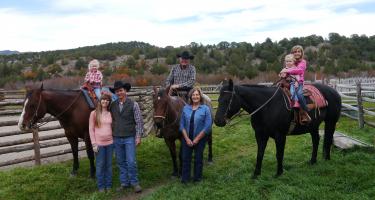 Johnson Mountain Ranch is owned and operated by Stuart Johnson with this wife Carma, along with their son Jared. Stuart’s grandfather started the original family farm and ranch in Utah’s Sevier Valley in 1904.
Johnson Mountain Ranch is owned and operated by Stuart Johnson with this wife Carma, along with their son Jared. Stuart’s grandfather started the original family farm and ranch in Utah’s Sevier Valley in 1904.
https://www.landcan.org/success/Johnson-Mountain-Ranch/3422/
By:
Leopold Conservation Award Program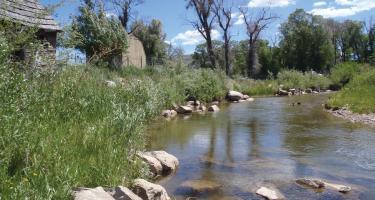 In the early 1990s, the Chalk Creek Watershed was considered one of Utah’s most degraded watersheds. The creek suffered through years of erosion-induced silt from hundreds of miles of backcountry mining and oil exploration roads. When the area experienced rain and record floods in 1983, the creek was in ruins. To slow channelization, some residents in the area simply began rolling old car bodies into the creek.
In the early 1990s, the Chalk Creek Watershed was considered one of Utah’s most degraded watersheds. The creek suffered through years of erosion-induced silt from hundreds of miles of backcountry mining and oil exploration roads. When the area experienced rain and record floods in 1983, the creek was in ruins. To slow channelization, some residents in the area simply began rolling old car bodies into the creek.
https://www.landcan.org/success/Jerrold-Richins-Ranch/3421/
By:
Leopold Conservation Award Program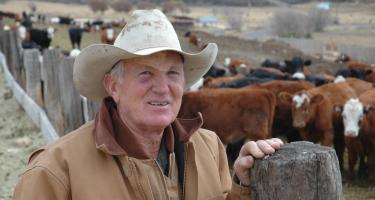 Cousins Karl and Raymond Heaton are fourth generation ranchers responsible for the management of over 140,000 private and federal acres at Heaton Ranch, located in Alton. The ranch consists of approximately 1,250 head of cattle.
Cousins Karl and Raymond Heaton are fourth generation ranchers responsible for the management of over 140,000 private and federal acres at Heaton Ranch, located in Alton. The ranch consists of approximately 1,250 head of cattle.
https://www.landcan.org/success/Heaton-Livestock-Company/3420/
By:
Leopold Conservation Award Program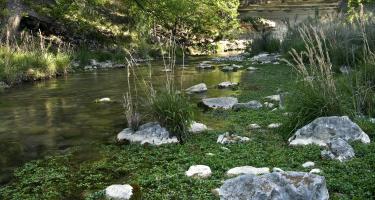 The Llano Springs Ranch, located 20 miles north of Rocksprings in Edwards County, is a true, family-run operation. The 5,100 acre ranch is owned and operated by Dr. Tom G. Vandivier, his children, Tom M. Vandivier and Ann Vandivier Brodnax and their families.
The Llano Springs Ranch, located 20 miles north of Rocksprings in Edwards County, is a true, family-run operation. The 5,100 acre ranch is owned and operated by Dr. Tom G. Vandivier, his children, Tom M. Vandivier and Ann Vandivier Brodnax and their families.
https://www.landcan.org/success/Llano-Springs-Ranch/3409/
By:
Leopold Conservation Award Program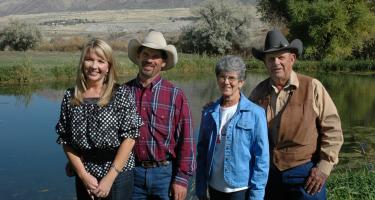 The fourth generation Harold Selman Ranches has a long tradition of land stewardship, beginning in the 1940s with Harold and Dorthella Selman. Their land ethic was passed on to their son, Fred, who, along with his wife, Laura, and their son, Bret, and his wife, Michelle, continues to manage the ranching operation.
The fourth generation Harold Selman Ranches has a long tradition of land stewardship, beginning in the 1940s with Harold and Dorthella Selman. Their land ethic was passed on to their son, Fred, who, along with his wife, Laura, and their son, Bret, and his wife, Michelle, continues to manage the ranching operation.
https://www.landcan.org/success/Harold-Selman-Ranches/3419/
By:
Leopold Conservation Award Program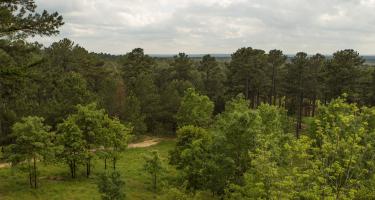 When the Winston family acquired their property just south of Nacogdoches in the 1980s, it was largely land that had been cut and not replanted. Since then, it has been carefully restored and transformed into a showplace on how to produce timber and quality wildlife habitat.
When the Winston family acquired their property just south of Nacogdoches in the 1980s, it was largely land that had been cut and not replanted. Since then, it has been carefully restored and transformed into a showplace on how to produce timber and quality wildlife habitat.
https://www.landcan.org/success/Winston-8-Ranch/3414/
By:
Leopold Conservation Award Program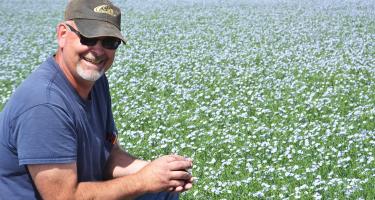 Cronin Farms was established in 1910, when Carl Cronin moved from Nebraska to South Dakota. Ever since the beginning, the farm has been a diverse mix-livestock and crop enterprise. Today the farm is managed by Monty and Mike Cronin, along with their agronomy manager Dan Forgey.
Cronin Farms was established in 1910, when Carl Cronin moved from Nebraska to South Dakota. Ever since the beginning, the farm has been a diverse mix-livestock and crop enterprise. Today the farm is managed by Monty and Mike Cronin, along with their agronomy manager Dan Forgey.
https://www.landcan.org/success/Cronin-Farms/3395/
By:
Leopold Conservation Award Program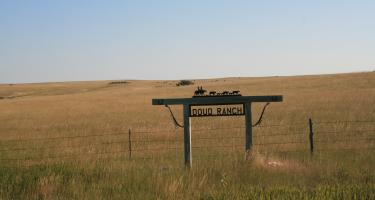 Rick and Marlis Doud’s ranch, near Midland, is comprised of 6,000 deeded acres and 2,500 leased acres on which they run nearly 400 cow-calf pairs.
Rick and Marlis Doud’s ranch, near Midland, is comprised of 6,000 deeded acres and 2,500 leased acres on which they run nearly 400 cow-calf pairs.
https://www.landcan.org/success/Doud-Ranch/3396/
By:
Leopold Conservation Award Program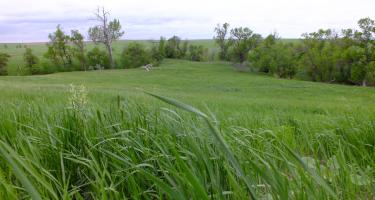 Guptill Ranch is a 7,000-acre cattle operation that Pat and Mary Lou Guptill have owned and managed for the past 25 years. With their five children, they are caretakers of this special landscape in western South Dakota. The area features grasslands with rolling hills and a wooded creek running through the ranch.
Guptill Ranch is a 7,000-acre cattle operation that Pat and Mary Lou Guptill have owned and managed for the past 25 years. With their five children, they are caretakers of this special landscape in western South Dakota. The area features grasslands with rolling hills and a wooded creek running through the ranch.
https://www.landcan.org/success/Guptill-Ranch/3397/
By:
Leopold Conservation Award Program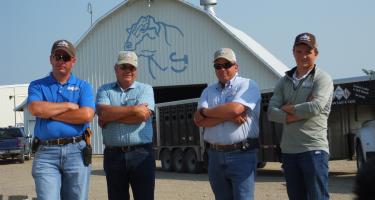 The Jorgensens have made a living from farming and ranching for more than 100 years. Humbly beginning as a small family farm, Jorgensen Land and Cattle Partnership has grown to include livestock, a large variety of crops and a hunting business.
The Jorgensens have made a living from farming and ranching for more than 100 years. Humbly beginning as a small family farm, Jorgensen Land and Cattle Partnership has grown to include livestock, a large variety of crops and a hunting business.
https://www.landcan.org/success/Jorgensen-Land-and-Cattle-Partnership/3398/
By:
Leopold Conservation Award Program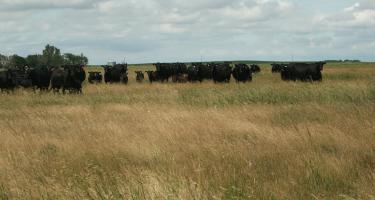 Jim and Karen Kopriva purchased their first land in Clark County in 1991, but credit Karen’s parents, Harold and Mary Hurlbert, with helping them establish their farm. Karen’s family has been in Clark County since 1880 and her parents have helped both their daughters’ families get started in agriculture. Over one third of the operation’s land base is land that has been in Karen’s family for three generations.
Jim and Karen Kopriva purchased their first land in Clark County in 1991, but credit Karen’s parents, Harold and Mary Hurlbert, with helping them establish their farm. Karen’s family has been in Clark County since 1880 and her parents have helped both their daughters’ families get started in agriculture. Over one third of the operation’s land base is land that has been in Karen’s family for three generations.
https://www.landcan.org/success/Kopriva-Angus/3399/
By:
Leopold Conservation Award Program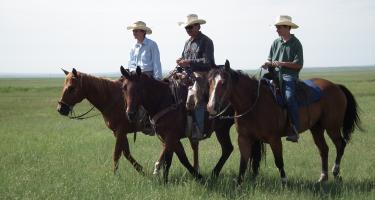 At the end of the 1940s, Clarence Mortenson began to wonder how all of the water originating on his ranch could be kept there for use over an extended period of time. This idea sparked his effort to restore the ranch to its natural state. Clarence’s vision has been embraced by his sons, Todd, Jeff, and Curt, who currently operate Mortenson Ranch.
At the end of the 1940s, Clarence Mortenson began to wonder how all of the water originating on his ranch could be kept there for use over an extended period of time. This idea sparked his effort to restore the ranch to its natural state. Clarence’s vision has been embraced by his sons, Todd, Jeff, and Curt, who currently operate Mortenson Ranch.
https://www.landcan.org/success/Mortenson-Ranch/3400/
By:
Leopold Conservation Award Program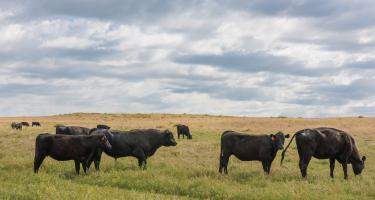 Holistic resources management focused on long-term sustainability is a way of life at Rock Hills Ranch. Lyle and Garnet Perman, along with their son Luke and his wife Naomi, raise crops and Angus cattle on the 7,500-acre ranch near Lowry.
Holistic resources management focused on long-term sustainability is a way of life at Rock Hills Ranch. Lyle and Garnet Perman, along with their son Luke and his wife Naomi, raise crops and Angus cattle on the 7,500-acre ranch near Lowry.
https://www.landcan.org/success/Rock-Hills-Ranch/3401/
By:
Leopold Conservation Award Program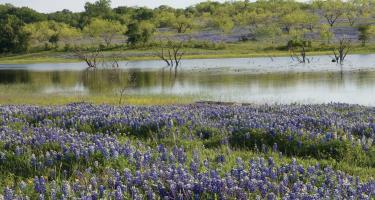 Gary and Sue Price’s 1,900 acre 77 Ranch in Navarro County is designed and run to be both economically and environmentally sustainable. The Prices do not make a business decision without first considering its environmental impact.
Gary and Sue Price’s 1,900 acre 77 Ranch in Navarro County is designed and run to be both economically and environmentally sustainable. The Prices do not make a business decision without first considering its environmental impact.
https://www.landcan.org/success/77-Ranch/3402/
By:
Leopold Conservation Award Program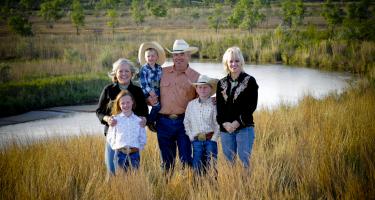 Jim Bill Anderson and his family are exceptional stewards of the land, water, and wildlife of Anderson Ranch, which is located in Canadian, Texas in Hemphill County, and is comprised of over 5,000 acres.
Jim Bill Anderson and his family are exceptional stewards of the land, water, and wildlife of Anderson Ranch, which is located in Canadian, Texas in Hemphill County, and is comprised of over 5,000 acres.
https://www.landcan.org/success/Anderson-Ranch/3403/
By:
Leopold Conservation Award Program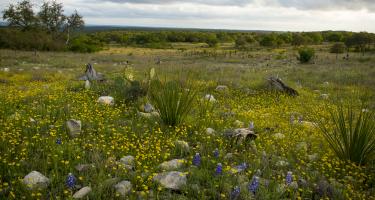 Blue Mountain Peak Ranch was once in a state of disrepair; its poor range health was a result of overgrazing, and the land was heavily dominated by blueberry juniper. When it was purchased by Richard Taylor and his late-wife Sally in 2001, it was their dream to rehabilitate the land to what it was before European settlement ? more live oak savannah grassland in the uplands, and a higher density of woody plants restricted mainly to the draws. For the past eight years, Suzie Paris, Richard and Sally’s longtime friend and now Richard’s partner, has been active in the ranch restoration.
Blue Mountain Peak Ranch was once in a state of disrepair; its poor range health was a result of overgrazing, and the land was heavily dominated by blueberry juniper. When it was purchased by Richard Taylor and his late-wife Sally in 2001, it was their dream to rehabilitate the land to what it was before European settlement ? more live oak savannah grassland in the uplands, and a higher density of woody plants restricted mainly to the draws. For the past eight years, Suzie Paris, Richard and Sally’s longtime friend and now Richard’s partner, has been active in the ranch restoration.
https://www.landcan.org/success/Blue-Mountain-Peak-Ranch/3404/
By:
Leopold Conservation Award Program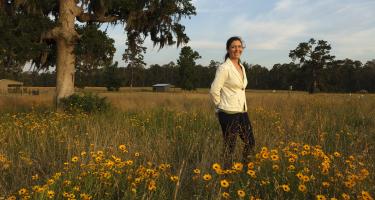 The George Mitchell family’s Cook’s Branch Conservancy, which consists of 5,650 acres in southeastern Texas, has been managed for nearly 50 years under a family tradition of conservation and sustainability.
The George Mitchell family’s Cook’s Branch Conservancy, which consists of 5,650 acres in southeastern Texas, has been managed for nearly 50 years under a family tradition of conservation and sustainability.
https://www.landcan.org/success/Cooks-Branch-Conservancy/3405/
By:
Leopold Conservation Award Program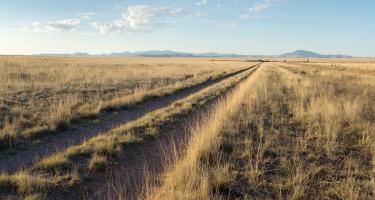 Spread across north central and southwest Texas, the five working ranches owned and managed by Dixon Water Foundation are sights to behold. Their mission, to promote healthy watersheds through sustainable land management to ensure that future generations have the water resources they need, has led to successful restoration of plant diversity, improved watershed conditions and wildlife habitat across all of their ranches.
Spread across north central and southwest Texas, the five working ranches owned and managed by Dixon Water Foundation are sights to behold. Their mission, to promote healthy watersheds through sustainable land management to ensure that future generations have the water resources they need, has led to successful restoration of plant diversity, improved watershed conditions and wildlife habitat across all of their ranches.
https://www.landcan.org/success/Dixon-Water-Foundation/3406/
By:
Leopold Conservation Award Program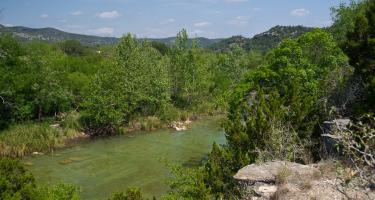 For more than three decades, Jack and Jan Cato have tirelessly pursued revitalization efforts on two ranches in two different ecological regions of Texas. Their Buckhollow Ranch is located in Uvalde and Real counties on the Edwards Plateau and the Stockard-Sirianni Ranch is in Frio County in the South Texas Plains eco region.
For more than three decades, Jack and Jan Cato have tirelessly pursued revitalization efforts on two ranches in two different ecological regions of Texas. Their Buckhollow Ranch is located in Uvalde and Real counties on the Edwards Plateau and the Stockard-Sirianni Ranch is in Frio County in the South Texas Plains eco region.
https://www.landcan.org/success/Jack-and-Jan-Cato/3407/
By:
Leopold Conservation Award Program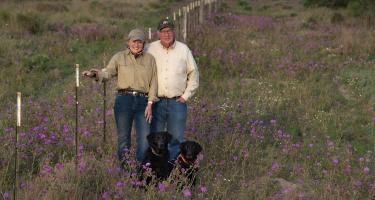 Wildlife habitat is flourishing in South Texas thanks to Laborcitas Creek Ranch.
Wildlife habitat is flourishing in South Texas thanks to Laborcitas Creek Ranch.
https://www.landcan.org/success/Laborcitas-Creek-Ranch/3408/
 Sign In
Sign In
 Sign In
Sign In
